The C Grade
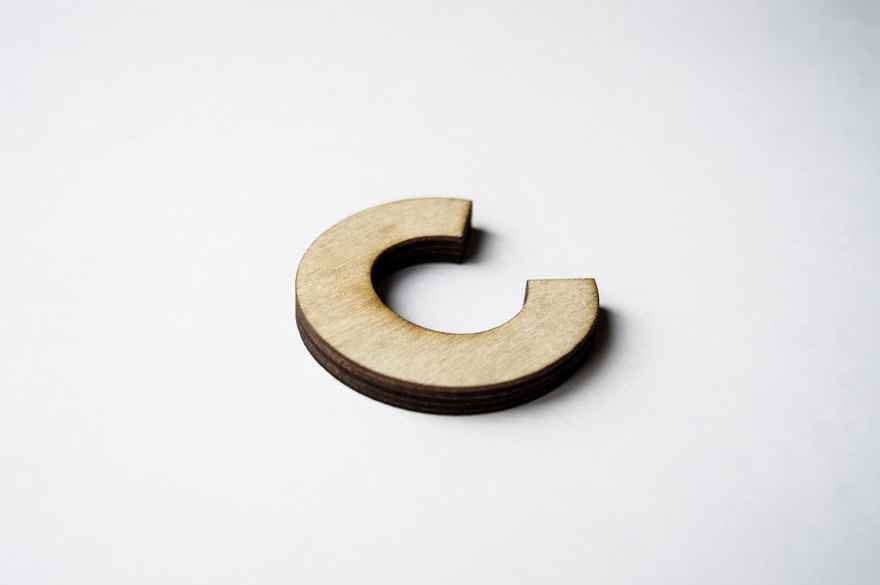
This post has previously been published, and has been republished on 27/11/2021
It is report time in Australia right now and tens of thousands of parents are either reading, or about to read about their child’s academic progress over the last two terms. All schools in Australia are required to grade children’s academic results on a 5 point scale. In many schools this is represented through A – E grades, with a C grade meaning that the student has learned to complete the skill or task reasonably well in the context of familiar tasks.
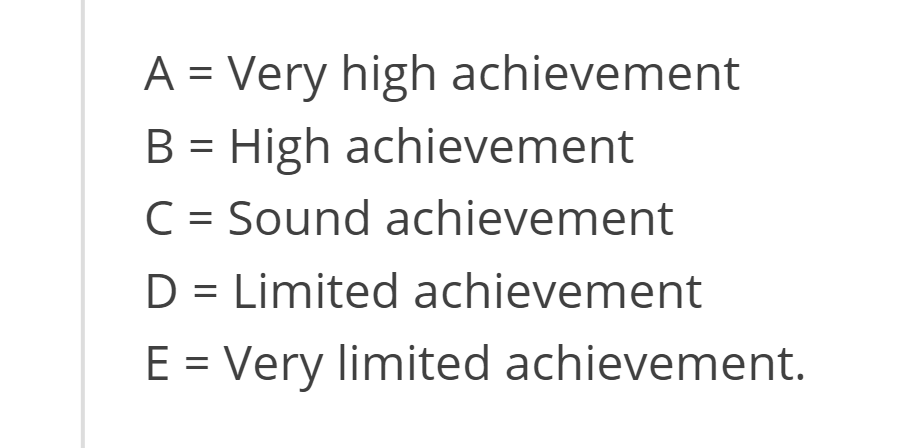
This has been a challenge for parents to accept in some ways as when we were at school a C was not great and usually meant that you were a little lazy.
These days a C is a respectable grade. According to the NSW Education Standards Authority (NESA),
“The student has a sound knowledge and understanding of the main areas of content and has achieved an adequate level of competence in the processes and skills.”
Or does it?
Here is what should happen:

C (should be) for consistent – for a student to receive a C grade, they need to demonstrate skills and knowledge consistently and not just as a one off.
C (should be) for confident – The student can perform the task or express the knowledge largely on their own, without a lot of teacher guidance or direction at the appropriate level.
C (should be) for conventional – the student can perform the task in conventional tasks in the learning environment.
However, C seems to also be for Capricious
C grades seem to be unpredictable. Uncertainty about grading causes no end of anxiety for parents.
Recent Facebook discussion has centred on the fact that parents are calling ‘bollocks’ on their kids’ C grades. One parent commented on the fact that their child can barely read and write in year 3 and yet, has been given a C grade for English. I have heard this time and again from parents frustrated that their child’s difficulties were hidden from them for years. They were told, “Your son/daughter will be fine. Just give them time” or “They are doing well. Don’t worry!” They know in their hearts that something is wrong, but are convinced to go against their instincts.

C is for Conceal - A misleading C grade masks potential or real difficulties and results in children not receiving the help they need in their literacy. By the time the parent truly realises how far behind they are their child has years of failure to overcome.
So Why is a C Not Really a C?
C is for comparison – often, C grades are given because a teacher has compared a student with other students in the class and not against the grade level expectation of the Australian Curriculum. If many of the children in a class or school are achieving a level lower than Australian expectations, a teacher may incorrectly assign a C grade. This is particularly pertinent in disadvantaged and remote schools.
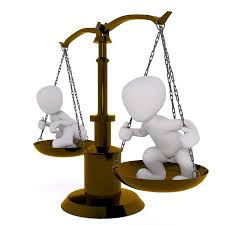
C is for conspiracy – some parents feel that the C grade is part of a wider ‘too hard basket’. By giving a C grade to a struggling student the school does not have to admit that the child is experiencing difficulty and therefore does not have to act to support that difficulty. I do not know any teachers who would purposely mislead a parent, but it is how many parents feel.

C is for Caring and Concern – some teachers assign a C grade out of concern for the student’s emotional wellbeing. They know that the child is struggling, but give the C grade out of kindness to spare their feelings. However, it is not kind. Quite the opposite. To quote one of my favourite authors (Brene Brown), “Clear is Kind. Unclear is not kind”.
C is for Compelled – schools may look down on children received D grades and teachers are therefore compelled to assign a C grade, even if they have doubts about it. They don’t want to be judged as bad teachers.
C is for Counterproductive – the tools that schools use to determine the grade, such a bench-marking tools for reading, do not give an accurate representation of actual skills and knowledge. Much time is spent on assessing the children in ways that do not yield accurate results.
C is for Careless – Not all teachers use sound teaching and assessment practices. It is not unheard of for a teacher to come to reporting time and realise that they either haven’t taught the required curriculum or haven’t adequately assessed it, so the C grade is the answer.

C is for Cop-Out – It is tough to have a conversation with a parent that involves you telling them that their child is not meeting expectations. The C grade is sometimes given as a cop-out to avoid a difficult conversation. This may leave the parent feeling that you are hiding something, even you aren’t. It erodes trust.
C is for Confusion – Teachers may be genuinely confused about how to grade students. They might not have an adequate understanding of what a C grade really means for their year level.
To alleviate that confusion for teachers and parents alike here is some information about how to grade effectively.
The Australian Curriculum
The Australian curriculum sets out what children are expected to learn and to do at particular grades. It also contains portfolios of what satisfactory, below satisfactory and above satisfactory student work looks like.
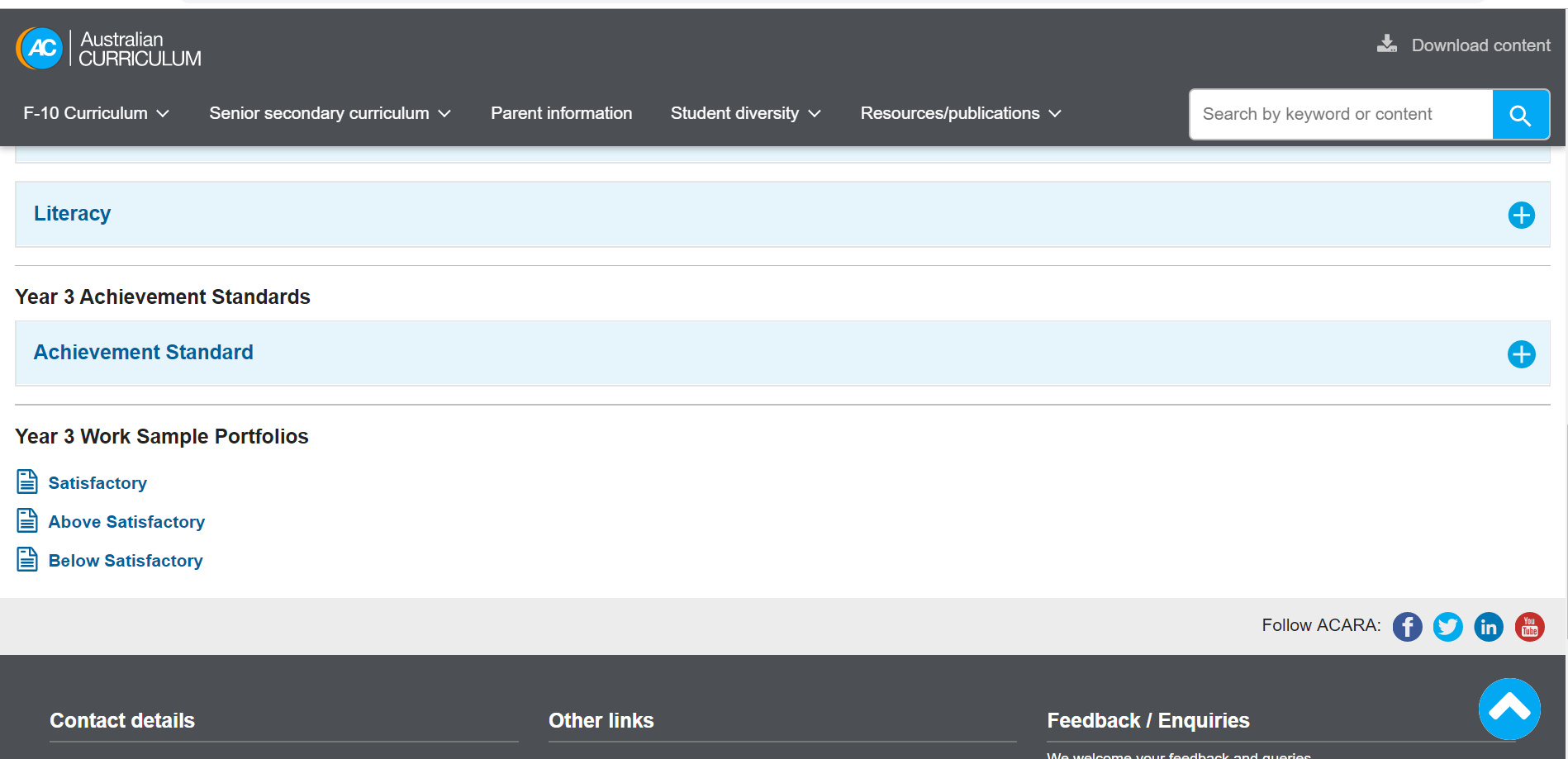
The portfolios also contain videos of children reading out-loud.
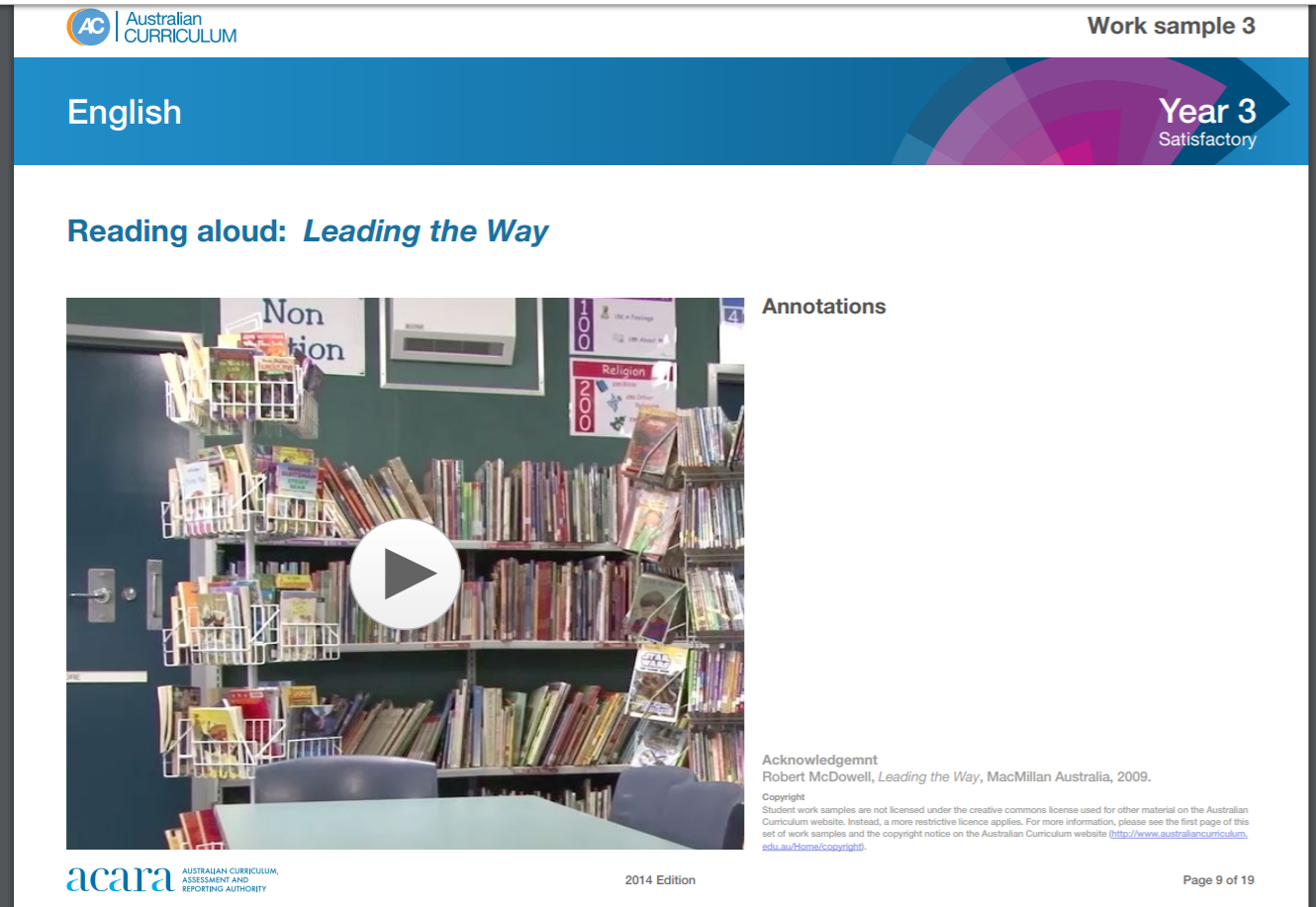
The curriculum contains Content Descriptors and Elaborations that provide further detail about what children should be learning in the curriculum area for the grade. The following Content descriptors and elaborations are for year 3 English.
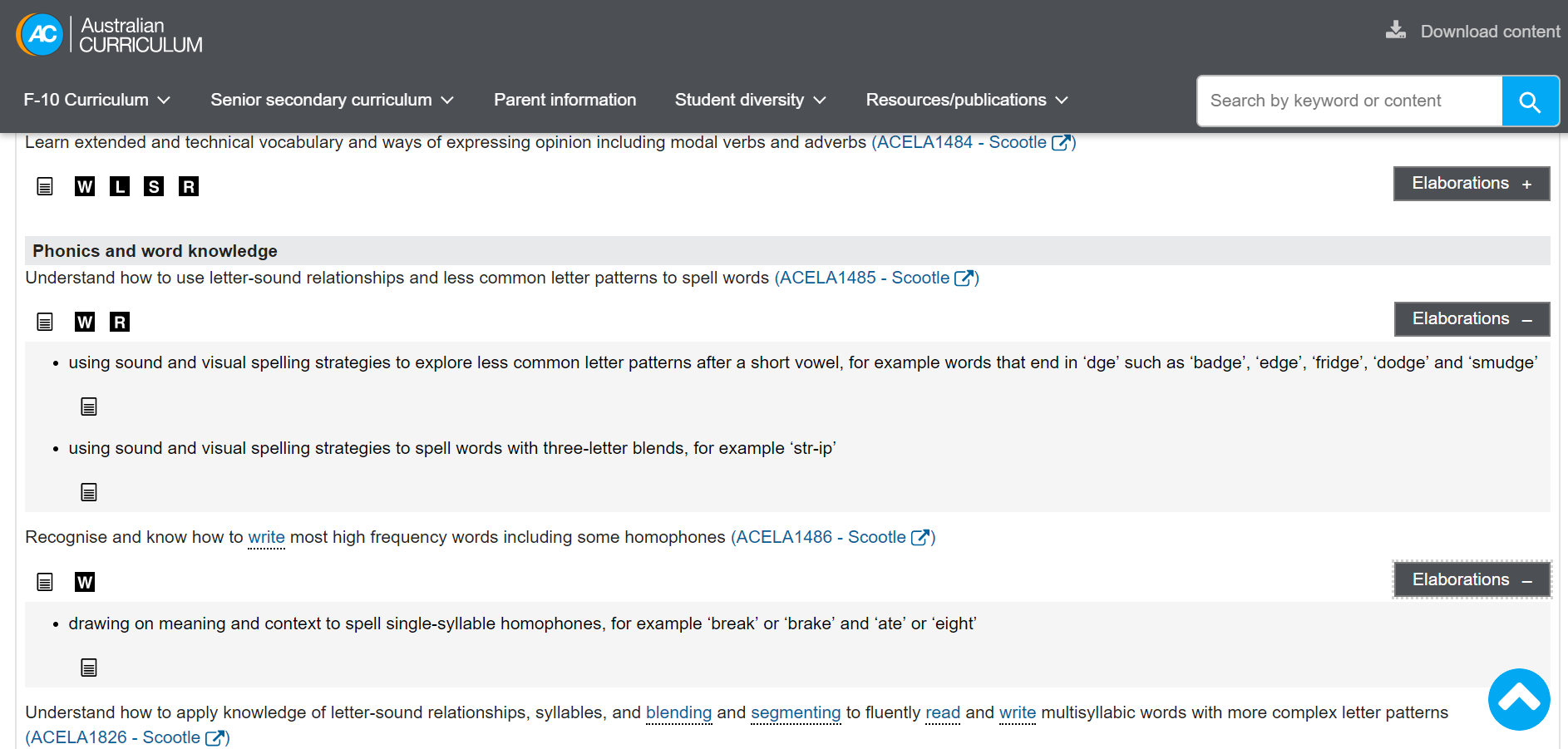
Further down the page you will find the Achievement Standard which children’s work is compared to in order to determine whether they have learned the required material.
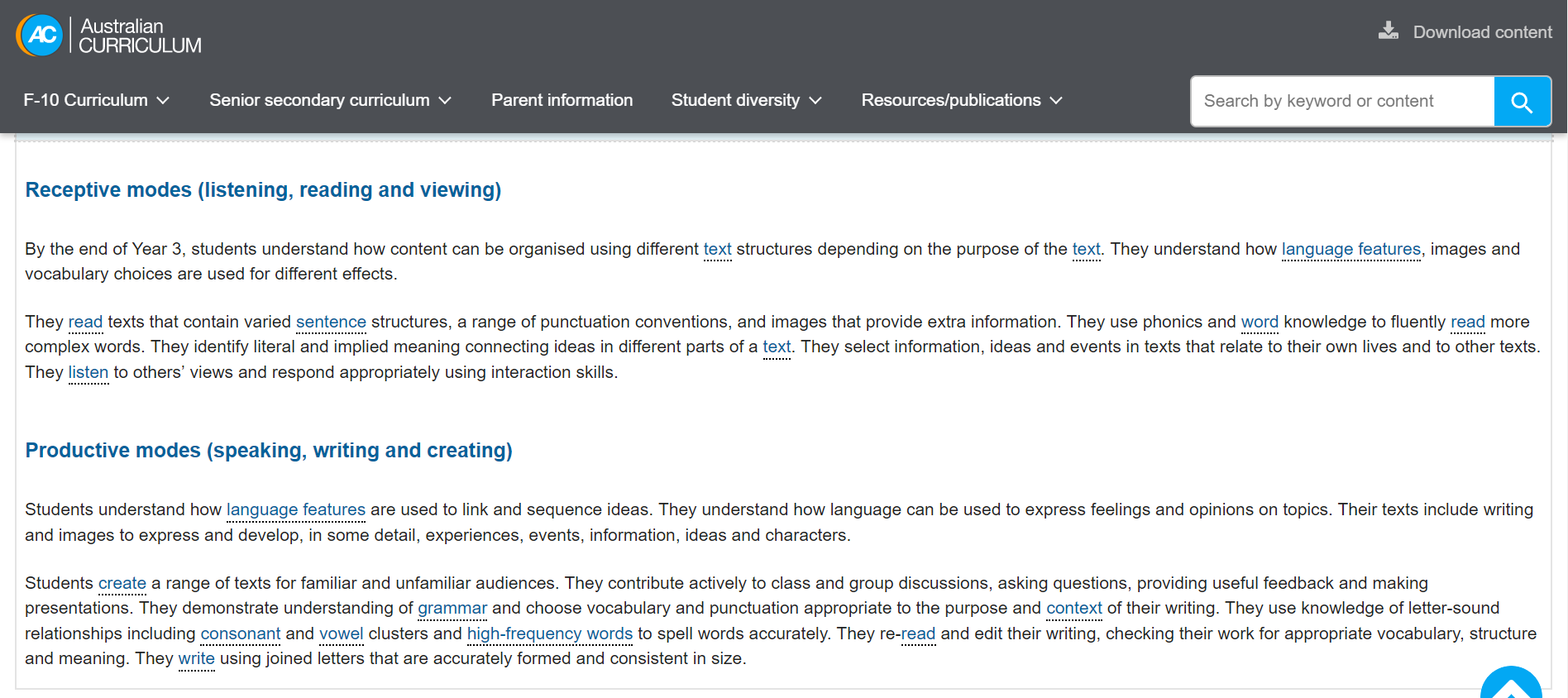
Rubrics
Using the above parts of the Australian Curriculum Website may still not give all of the information needed to determine a grade. Different states and territories have developed rubrics to allow teachers to make a decision about the specific grade that each child will receive.
The Queensland Curriculum and Assessment Authority has freely available rubrics, called Standards Elaborations, that anyone can access. You can access all standards elaborations here.
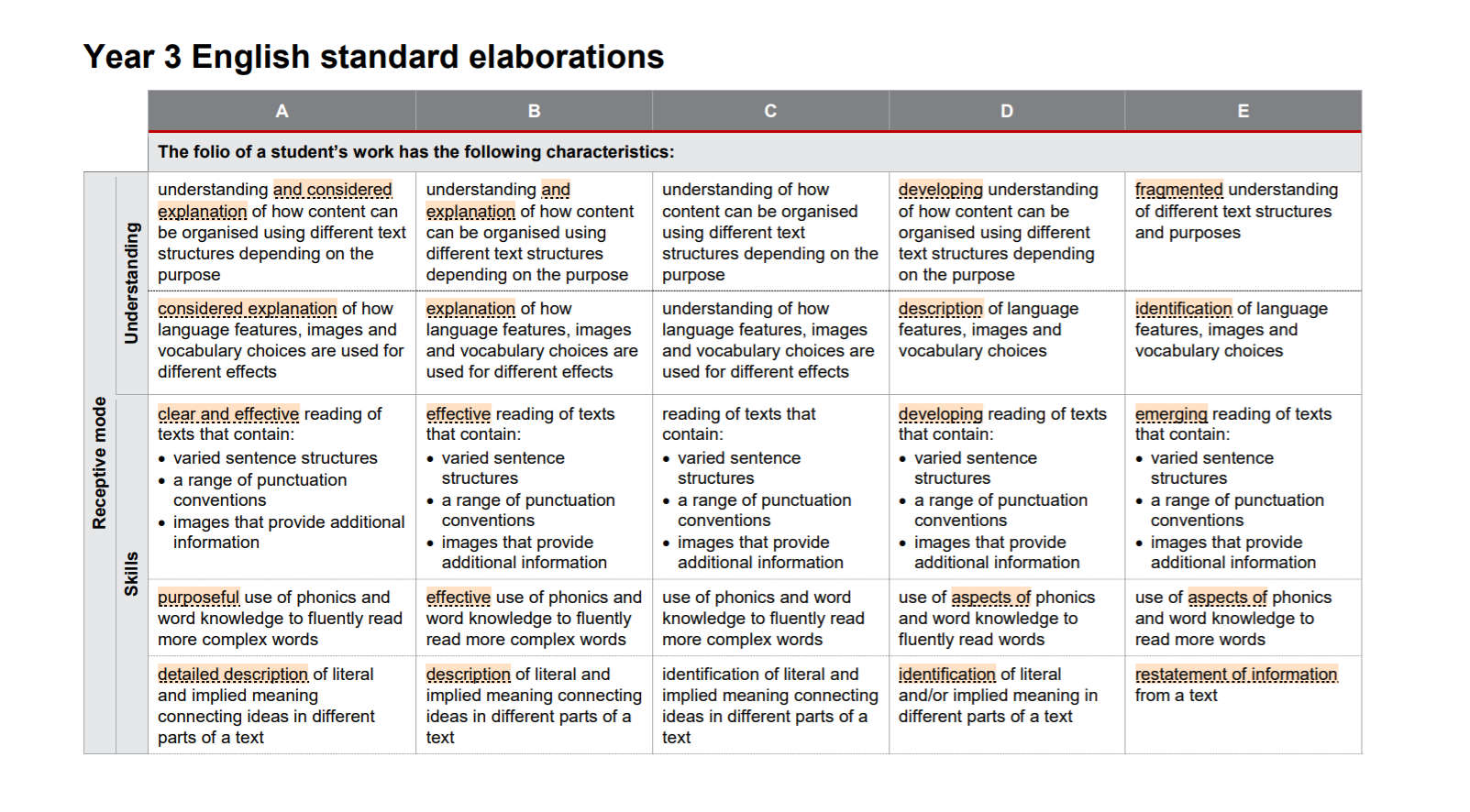
The common C grade can cause consternation when not assigned correctly. Giving a C when a child is not actually working at the appropriate level conceals difficulties or poor teaching. It leaves parents feeling anxious and erodes the trust between teacher and parents.
Teachers, if you are in doubt about whether or not a child demonstrates the necessary skills and knowledge to receive a C grade, consult with your jurisdiction's curriculum officers. They will love receiving your call.
Parents, if you have concerns about your child’s C grade, go back to the teacher and have an open discussion with them. Realise that there may simply have been a mistake made or that the teacher may be feeling unsure about how to tell you that your child is struggling. However, if this conversation goes nowhere, don’t hesitate to give the Senior Teacher or Principal a call.
We need the C to be consistent and instil confidence in parents so that a child can receive the appropriate intervention they need to build their skills long into the future.

 Jocelyn Seamer Education
Jocelyn Seamer Education
7 comments
On our Vic reports the dot we place in each curriculum area, shows the growth from the last report, so even if still behind year level, if the student has made 12 months growth in 6 months, the dots will indicate this.
Hi,
I really appreciate this article and doubly so, because you are in a different country than I am. In my county in the US, we have Standards Base Grading (1-4), which sounds similar to what you have described. The rubrics we got this year have made assigning grades less subjective which is a plus. However, our parents don't yet understand the new system and tend to panic when low scored are reported early in the year for most (since we are always comparing their progress to End of Year standards mastery. I do wish there was a better way to indicate, early in the year, that a child hasn't shown mastery but is on target to do so vs a child who is significantly below level.
Leave a comment